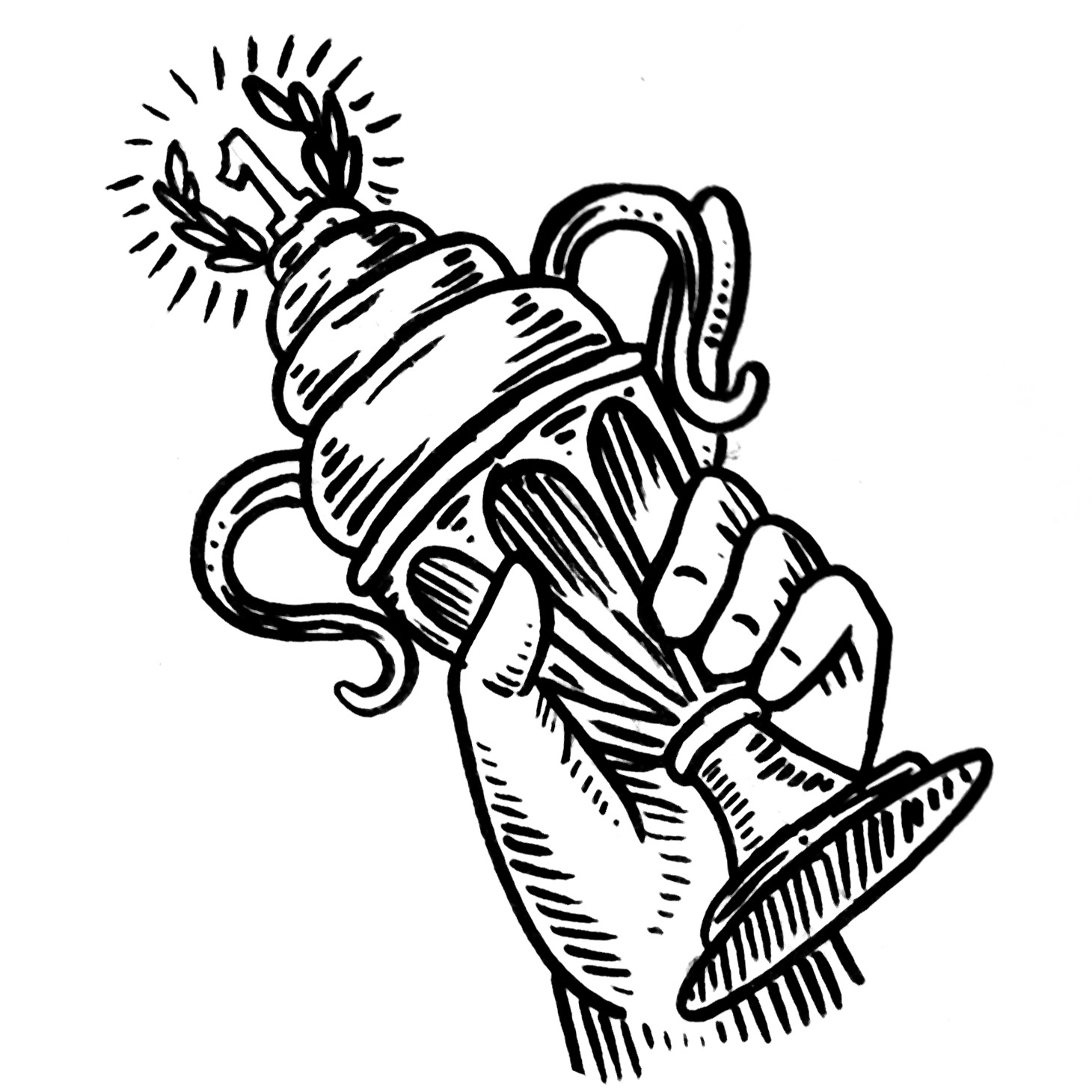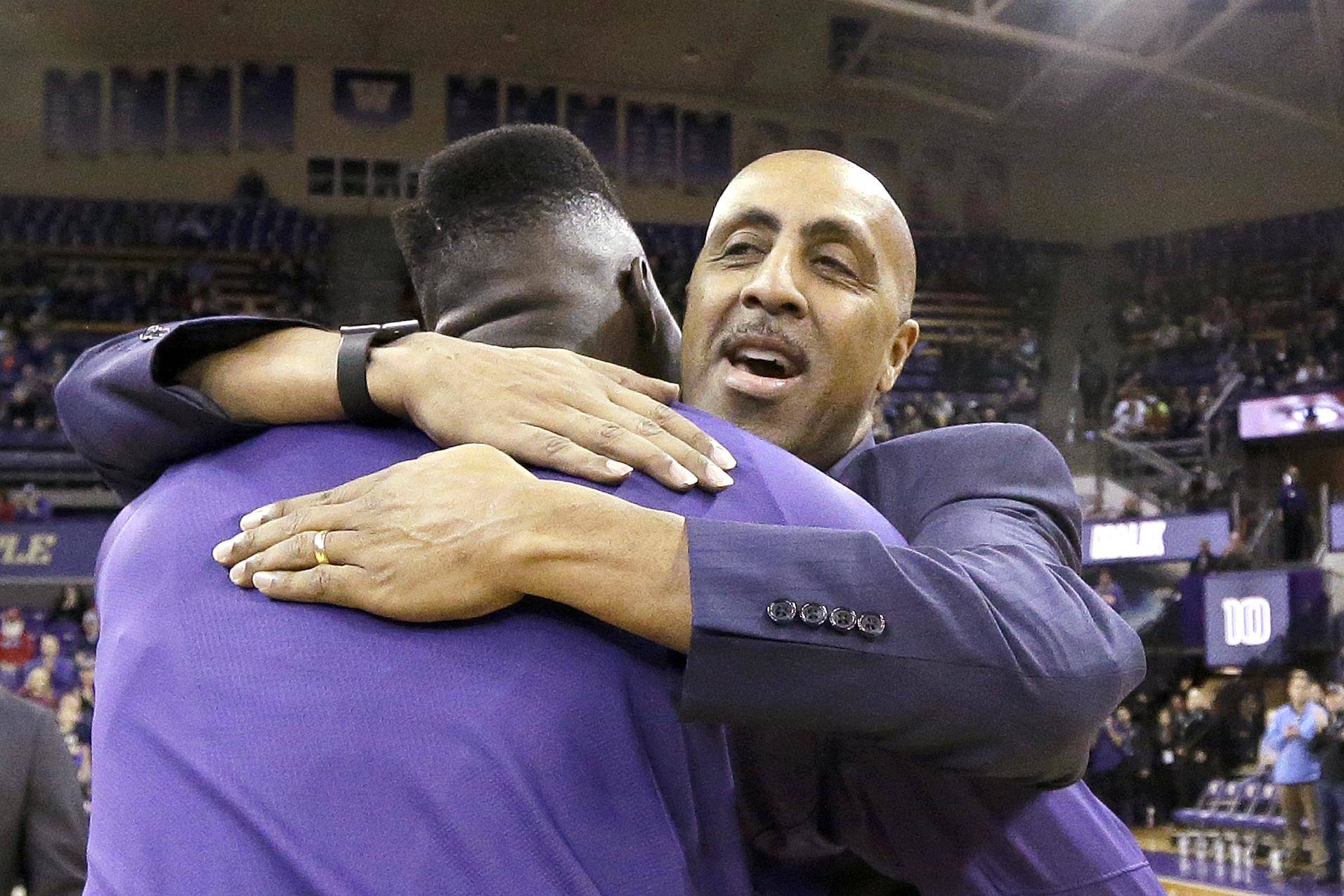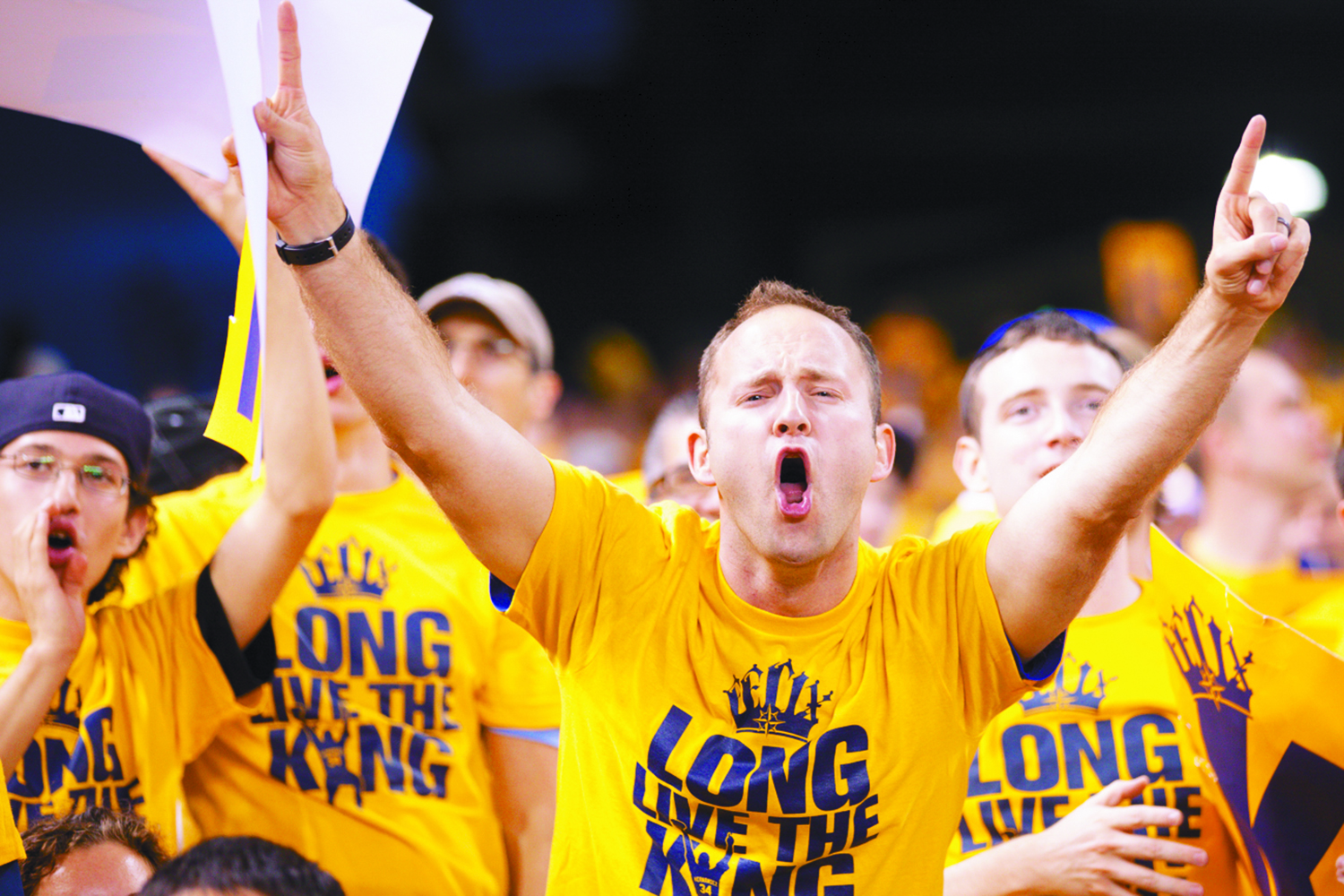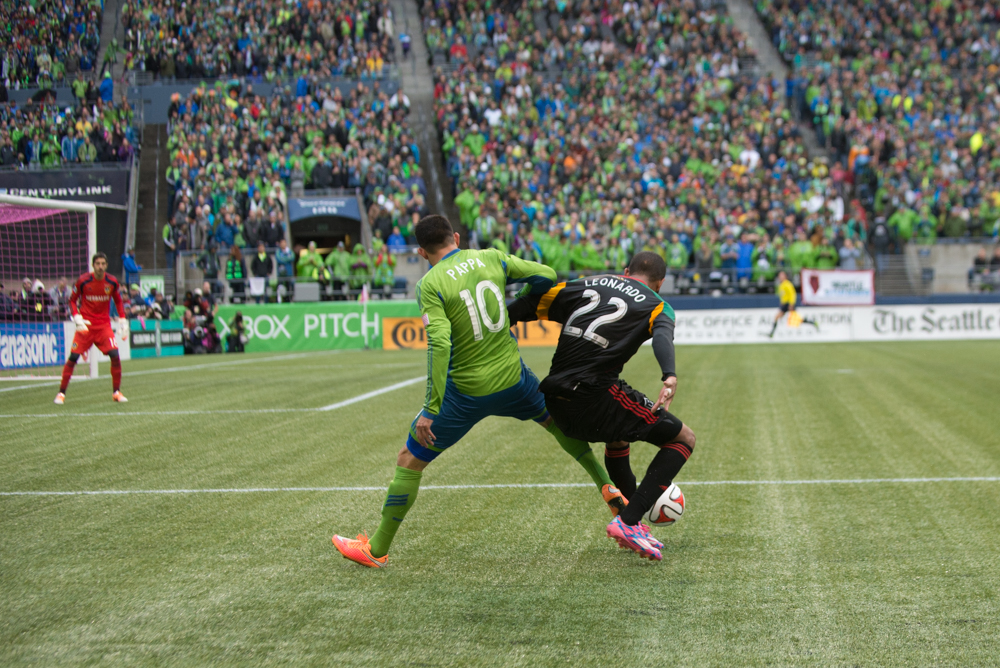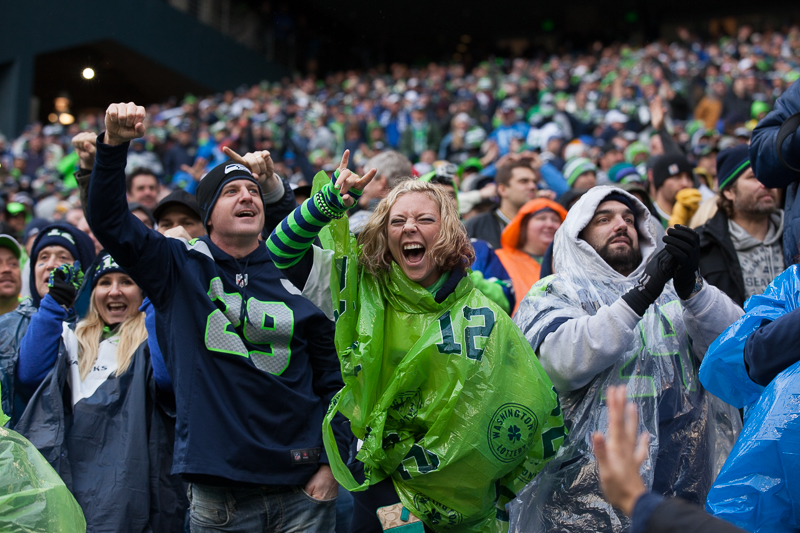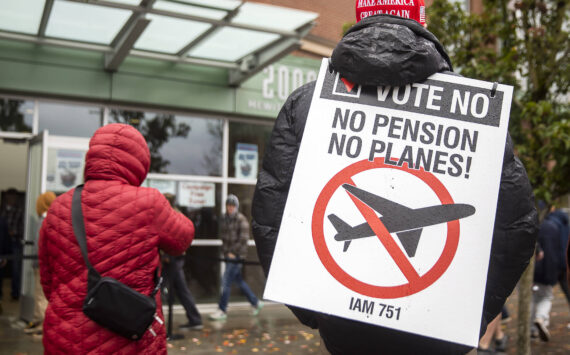Here’s a fun game: See if you can tell which of the following quotes is Russell Wilson speaking at Seahawks training camp last week, and which is John Johnson speaking at Sonics training camp 35 years ago.
a) “It’s a new year and it’s a new beginning. I think the difference is everybody has felt winning before. They know how to get there.”
b) “We know what it takes to get there. We have to put everything in its proper perspective and go out and do it.”
Then as now, a local sports team started training camp with the goal of defending a championship. Then as now, smart athletes were asked some variant of a dumb question—”Do you think you can win the championship again?” Then as now, they came up with nearly the same meaningless answer. (Wilson’s is a, Johnson’s is b.)
When you read coverage of the 1979–80 Seattle SuperSonics training camp, you can replace a few names and think you’re reading about this year’s Seahawks.
Forward Paul Silas held out for 20 days. Photo by SuperSonics
For example, the Sonics had their very own veteran holdout! Punishing forward Paul Silas wanted fairer recompense for the toll his physical play took on his body, much as Marshawn Lynch does. Silas missed the first 20 days of training camp before agreeing to a one-year deal. We’ll see if Lynch has Silas’ persistence.
But as with the Seahawks, veteran players weren’t the big story. Youth was. You say that Russell Wilson and Earl Thomas are 25 years old and Richard Sherman is 26? Well, Gus Williams was 26, Dennis Johnson—who, like Sherman, attended Dominguez High in Compton—was 25. Jack Sikma was just 24. A talented core so young portended years of championship contention, just as the Seahawks’ does now. Not only that, but the Sonics had reloaded their roster with the sixth and seventh overall picks in the 1979 draft. The New York Times could rerun its prediction for the 1979 NBA season in their 2014 NFL preview and no one would blink: “Seattle, with youth, depth, versatility, and excellent coaching, is favored to repeat.”
The 1979–80 Sonics didn’t repeat. The promising young corps never captured another championship—or even reached another NBA finals (not with the Sonics, at least). Why?
Bad drafting. Those two top-10 picks? The Sonics used them on James Bailey and Vinnie Johnson. Both played sparingly, and neither was with the Sonics more than three seasons. With that kind of draft capital, the Sonics should either have traded for a player who could have improved their existing roster—as the Seahawks did last season by trading their first-round pick for Percy Harvin—or packaged the picks for a higher, future draft pick. Instead they got the worst of both worlds: two players who were neither good enough to contribute right away nor developmental prospects.
Bad personnel management. The Sonics allowed one of basketball’s best backcourts to slip away over money and personalities. Dennis Johnson and Lenny Wilkens didn’t get along, so Johnson was traded to Phoenix for Paul Westphal. Johnson played 10 more years and won two more championships. Westphal played just 36 games as a Sonic. The Sonics couldn’t agree with Gus Williams on a contract extension, so he held out an entire season before signing a long-term deal. The Seahawks, on the other hand. have methodically locked up their core players, from trash-talkers like Richard Sherman to quiet assassins like Kam Chancellor.
Bad luck. As it turned out, the only pick in the 1979 draft that mattered was the first overall pick, which the Lakers used to take Magic Johnson. As long as Johnson was in the league, the Sonics never finished ahead of the Lakers in the Pacific Division, and lost five consecutive playoff series to them. The Seahawks have similarly bad luck, playing in the NFL’s toughest division. They managed to slip past San Francisco last year; will they be able to again?
Will Lynch return to training camp like Silas, or hold out like Gus Williams? Photo by Jeremy Dwyer-Lindgren
Sikma first uttered the dreaded phrase “We’re rebuilding” just 16 months after the Sonics’ ’79 championship. They weren’t yet, but would be by 1984, when the team’s starting backcourt was Gerald Henderson and Al Wood. Lenny Wilkens was gone the next year, Sikma the year after that. It took another decade, and a completely different roster, before the Sonics were elite again.
sportsball@seattleweekly.com
